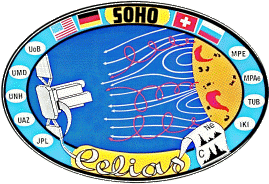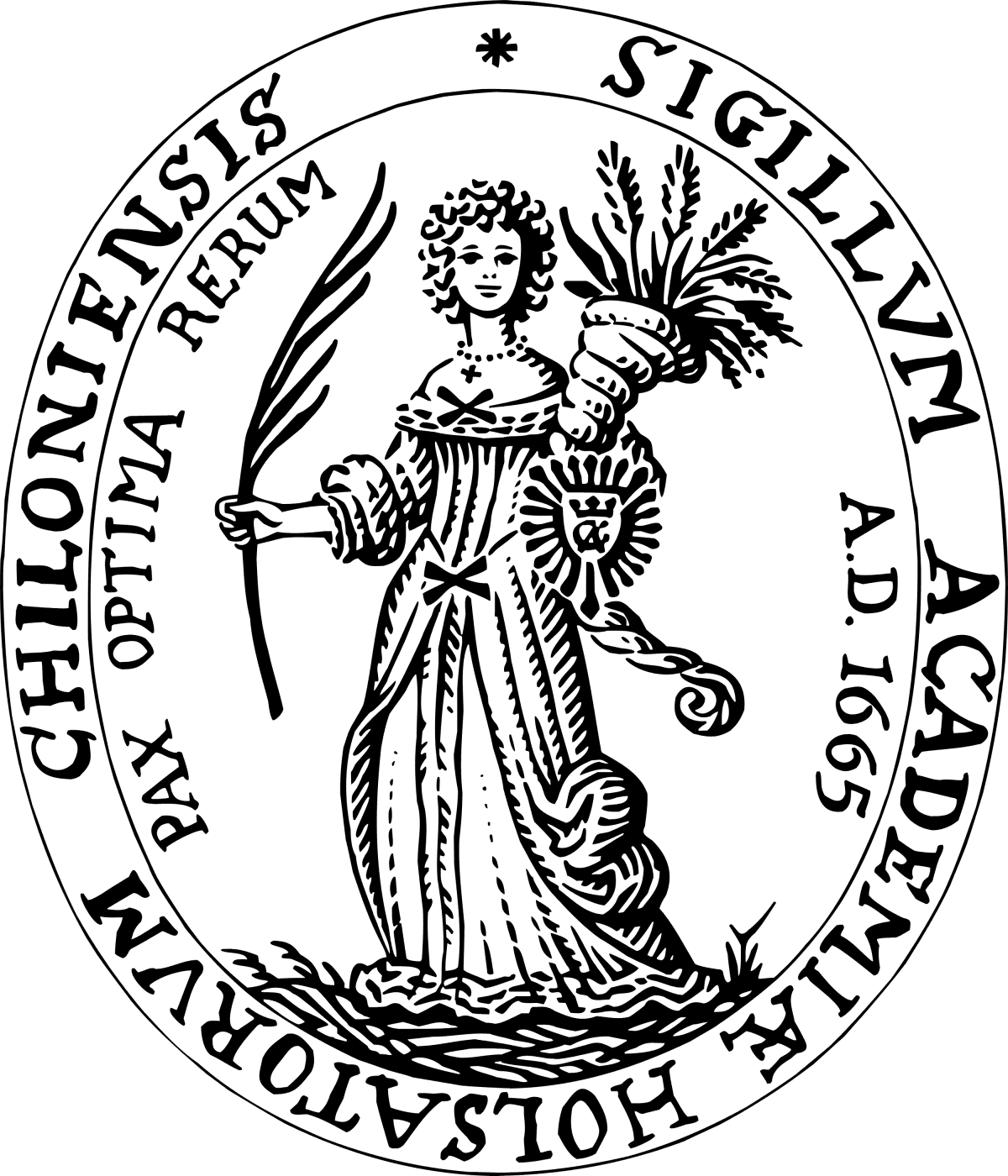 |
The Charge, Element, and Isotope Analysis System CELIAS on SOHO |
 |
Introduction
The CELIAS instrument is designed to study the composition of the solar wind (SW) and of solar and interplanetary energetic particles on SOHO. SOHO is a project of international cooperation between ESA and NASA. The CELIAS instrument consists of three different sensors with associated electronics, which are optimized each for a particular aspect of ion composition. These aspects are the elemental, isotopic, and ionic charge composition of SW or energetic ions emanating from the Sun. In addition, the Solar EUV Monitor (SEM) has been included into CELIAS for monitoring the absolute EUV flux from the Sun.
The CELIAS experiment is produced in a joint effort at the following hardware-providing institutions:
- Max-Planck-Institutfür Extraterrestrische Physik, Garching, Germany
- Physikalisches Institut der Universität Bern, Switzerland
- Max-Planck-Institut für Sonnersystemforschung, Göttingen (org. Katlenburg-Lindau), Germany
- University of Maryland, College Park, MD, USA
- Institut für Datenverarbeitung, Technische Universität Braunschweig, Germany
- Space Science Center, University of Southern California, Los Angeles, USA.
The work is supported in part by DLR (org. DARA), Germany, NASA, USA, by the Swiss National Science Foundation, and the PRODEX program of ESA.
Scientific Objectives
Particle abundance observations of the solar wind and of solar energetic particles (SEP) by itself, and in close correlation with optically observable phenomena on the Sun, will allow to tackle basically unsolved questions in solar physics such as: (1) the steady heating process in the corona, (2) SW acceleration processes, (3) dynamic heating phenomena driven by magnetic fields or waves, e.g. heating in coronal mass ejections, filament eruptions, flares, (4) SEP acceleration processes, (5) processes leading to variations in abundances (elemental, ionic charge, isotopic) and (6) the relation between composition and events/regions in the solar atmosphere.
Further scientific goals of CELIAS are to study the composition and dynamics of interplanetary pick-up ions in correlation with the solar EUV flux. For this purpose a solar EUV flux monitor (SEM) for the wavelength 17 to 70 nm has been included into the CELIAS instrument as a sub-unit of the STOF sensor. The SEM serves also to monitor the total absolute EUV flux for the large EUV telescopes on SOHO.
Evidently, the understanding of the phenomena outlined above requires collaboration with many other astrophysical disciplines. Among them are ground based observations including radio astronomical data (e.g. the well known Type III kilometric radio bursts which are related to the strong enrichment of certain species in SEP's) or the interpretation of solar wind abundances in terms of solar abundances as derived from photospheric spectra, meteoritic composition, and from solar oscillation data.
Experiment Overview
The CELIAS instrument consists of three different sensor units (CTOF, MTOF, and STOF) coupled to a Digital Processing Unit (DPU). The energy ranges of the SOHO particle instruments, the CELIAS ion sensors together with the COSTEP /ERNE energetic particle experiments, cover a very wide range (large version) in nuclear mass and energy space.
All three CELIAS sensors employ electrostatic deflection systems in combination with time-of-flight (TOF) measurements of the impinging particles. The CTOF and STOF sensors employ also silicon solid state detectors to determine the residual energy of particles. Thus for these two sensors the quantities energy per charge, E/Q, time-of-flight (TOF), and energy, E, are determined for the incoming particles. CTOF and STOF are aimed at different energy ranges, CTOF being devoted to solar wind and low energy suprathermal ions, while STOF is devoted to higher energy suprathermal and low energy solar energetic particles. The MTOF sensor is a high resolution retarding potential mass analyzer with a quadrupol electric field configuration, which will be able not only to measure the composition of the less abundant elements in the solar wind, but also the isotopic composition of the more abundant heavy ions.
The solar EUV monitor, SEM, is structurally connected with STOF. SEM consists basically of a diffraction grating in front of a set of three absolutely calibrated silicon light diodes, which are covered with an aluminum filter. The diodes are placed at the zero - and first order diffraction image of the Sun in order to isolate the 30.4 nm He II line.
The digital processing unit, DPU, serves all three sensors by fully handling the communications with the spacecraft. It receives rate and pulse-height data from each sensor, compresses, stores and formats it for conveying the data to the S/C telemetry. It also handles the experiment control through the commanding system and surveys the CELIAS housekeeping data. A picture of the integrated CELIAS instrument can be found here.
The CTOF Sensor
The solar wind Charge TOF (CTOF) sensor covers the energy per charge, E/Q, range 0.1 to 55 keV/charge, which fully includes the solar wind range. The sensor will determine the composition, charge state distribution, kinetic temperature, and speed of the more abundant solar wind ions (e.g. He, C, N, O, Ne, Mg, Si, and Fe). The sensor is designed to accept ions up to 55 keV/charge, corresponding to a bulk speed of about 1000 km/s for, e.g., Fe8+. To cover a wide solid angle and also to allow the measurement of reasonable fraction of the thermal width of the ion distribution, the solar wind enters the instrument through an ion-optic system which accepts the solar wind within a cone of 50° and which is matched with an electrostatic analyzer. After penetrating through the analyzer and prior to their entrance into the TOF detector, the ions are accelerated by up to 35 keV/charge to raise their energy above the threshold of the solid state detector (SSD) and to improve the charge state resolution.
The identification of solar wind ions is obtained by measuring the energy/charge, E/Q, the time-of-flight T, and the residual energy ESSD deposited in the solid state detector. From this we can determine the mass, M, and the velocity, s/T, of each ion according to
where s is the TOF path length, and a takes into account the pulse-height defect in the SSD. The mass per charge ratio, M/Q, will be derived by combining the accurate measurement of E/Q in the electrostatic deflection system and the time-of-flight T:
Uacc is the acceleration voltage, and b accounts for the energy loss in the carbon foil. Thus from the measurement of M and M/Q the ionic charge Q, and finally from Q and E/Q the initial energy E can be derived. Figures of the CTOF sensor can be found here.
The MTOF Sensor
The solar wind Mass TOF (MTOF) sensor is a high resolution TOF mass spectrometer (M/ΔM > 100) which will allow to measure the elemental and isotopic composition of the solar wind over a wide range of solar wind bulk speeds. The instrument employs a wide band electrostatic preselecting deflection system (WAVE), followed by a high-resolution retarding potential TOF analyzer.
The principle of operation of the mass analyzer is to measure the TOF of mostly singly ionized particles in a static electric square-well potential ( V = k x2). In such a potential - the potential of a harmonic oscillator - the TOF depends only on M/Q:
Solar wind ions within the passband of the front section WAVE (for Wide Angle Variable Energy/Charge) of the instrument pass through a thin carbon foil. In passing through the foil the solar wind ions lose a fraction of their energy, are scattered (typically in a cone of 10°), and emerge either as neutrals or singly ionized. Secondary electrons emitted from the foil will be recorded in a micro-channel-plate (MCP), while the electrostatically reflected ions are recorded in the stop-MCP. From the TOF immediately the mass of the ion can be derived. Figures of the MTOF sensor and the WAVE entrance system can be found here.
The Proton Monitor
The purpose of the Proton Monitor is threefold: (1) to measure the instantaneous solar wind proton velocity and provide that information, on a real-time basis, to the mass analyzing portion of the MTOF sensor to maintain a 100% duty cylce of ions in the mass range He through Fe; (2) to serve as a redundant solar wind proton and alpha particle sensor on the SOHO spacecraft; (3) during times of relatively slow solar wind kinetic temperature, to provide a stable in-flight calibration standard for the absolute density measurements of solar wind ions with both the MTOF and CTOF sensors.
The PM consits of a WAVE deflection system followed by a position-sensing MCP. The PM determines the solar wind proton density, temperature, and velocity over the range from 170 to 1200 km/sec within ±20° of the nominal aberrated solar wind direction. The maximum velocities for He2+ and O6+ are 850 km/sec and 740 km/sec, respectively. Data from the PM can be found here.
The STOF Sensor
The Suprathermal TOF (STOF) sensor is an ion telescope with a large geometrical factor of 0.1 cm2 sr for the measurement of the energy distribution of individual charge states of various elements of solar energetic particles. It covers the energy range from 20 to 3000 keV/charge by employing two separate sections of the electrostatic deflection system, one with curved (STOF) and one with flat deflection plates (HSTOF). Similar to the CTOF sensor it combines the selection of incoming particles according to E/Q by electrostatic deflection in a multi-gap system with a subsequent TOF analysis and a final energy measurement in a solid state detector. Only the postacceleration is not required because the suprathermal particles carry sufficient energy to respond in the solid state detector. Figures of the STOF sensor can be found here.
The Solar EUV Monitor
The Solar Extreme-Ultra-Violet Monitor, SEM, is a highly stable photodiode spectrometer that will continuously measure the full solar disk absolute photon flux at the prominent and scientifically important He II 30.4 nm line, as well as the absolute integral flux between 17 and 70 nm.
The entrance system consists of a 5000 line/mm transmission grating, placed between two aluminum filters (total 150 nm thick). The Al filter limits the radiation to the Al bandpass (17 - 70 nm). Any potential effect due to solar wind on the Al filters will be eliminated by the "solar wind deflector". The prominent He II 30.4 nm line will be isolated by the two side diodes while the center diode responds to the direct light (0-order). The diode current is monitored for all three diodes separately. Due to the extended source of the Sun (1/2 °) and finite size of the entrance silt (2 mm x 10 mm) the spectrometer will have a bandwidth of ± 4.0 nm at the 30.4 nm line. Figures of the SEM can be found here.
The Digital Processing Unit
The Digital Processing Unit, DPU, performs all tasks necessary to communicate commands and data between the sensors and the spacecraft, which in turn is linked through telemetry to ground. The main tasks are (1) to control the CELIAS sensors by DPU generated and S/C routed ground commands, (2) to record the house keeping data, (3) to record and format the counting rates of the sensors, and (4) to record, classify, and format pulse-height data. Its output data are routed through the S/C telemetry. Figures of the DPU can be found here.


